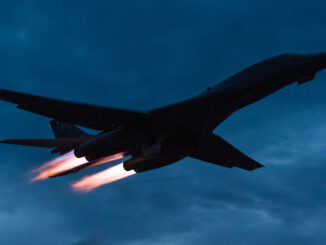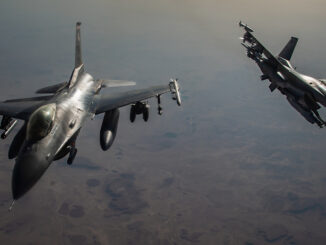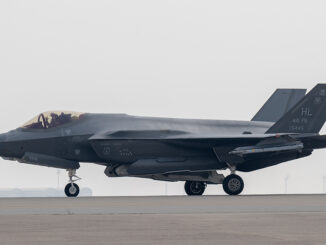
On Jun. 26, NATO held a meeting of its 28 members at the request of Turkey under article 4 of the Washington treaty following the downing of the Turkish Air Force RF-4E Phantom by a Syrian Air Defense battery on Jun.22.
After the meeting NATO released the following statement:
The North Atlantic Council has met at Turkey’s request to hold consultations within the framework of Article 4 of the Washington Treaty which states that “the Parties will consult whenever, in the opinion of any of them, the territorial integrity, political independence, or security of any of the Parties is threatened.”
The North Atlantic Council discussed the shooting down of a Turkish aircraft by Syria. We consider this act to be unacceptable and condemn it in the strongest terms. It is another example of the Syrian authorities’ disregard for international norms, peace and security, and human life.
Our thoughts at this difficult time are with the missing Turkish aircrew, their families and their loved ones. We continue to follow the situation closely and with great concern, and will remain seized of developments on the South-Eastern border of NATO.
The security of the Alliance is indivisible. We stand together with Turkey in the spirit of strong solidarity.
The New York Times ran an article (later picked up elsewhere) that included a scan of a letter sent from Turkey to the UN.
The letter includes several details that provide a clear view of the Turkish version of the episode.
Firstly the exact position of where the Phantom was hit: 35 48.22N – 35 32.21E which is 13NM from the coast of Syria and therefore in international airspace. This means the aircraft had violated the Syrian airspace but, according to the Turkish authorities, it had already left it when it was shot down at 11.58 local time.
Secondly according to the text of the letter, was flying at 7,400 feet on its own (not part of a pair) and after being hit turned towards the Syrian coast and hit the sea at 35 48.26N – 35 37.59E some 8NM from the coast.
Again the letter states the plane was transmitting its IFF (indentification, friend or foe) transponder and that Turkey has captured radio communications that demonstrates Syrian units knew this was a Turkish plane. The letter also alluded that Turkey may have proof from third party radar stations that could have recorded the route flown by the combat plane.
Noteworthy, the letter does not say that the RF-4ETM (this is the correct designation) was downed by a missile. However, if it was really flying so far from the coast (13 NM) and at medium altitude (7,400 ft), it could not be reached by anti-aircraft artillery flak.
Moreover, the letter confirmed that a search and rescue asset was fired upon whilst searching for the downed aircrew: it was a CASA (thought to be a CN-235) aircraft targeted by anti-aircraft artillery positioned on the Syrian shore.
Letter aside, new details about the mysterious Turkish activity near the Syrian territorial waters have emerged.
As said the aircraft was flying a preplanned route which included several similar patterns (this being one of the few things both parties agree on).
According to the data released by Turkey here’s how the airspace violation developed:
11.42LT: the aircraft “unintentionally” entered the Syrian airspace at 200 feet with a North East heading
11.44LT: a Turkish radar station (most probably the one providing assistance to the flight) issued an airspace violation warning
11.47LT: after turning left (and coming extremely close to the Syrian coast) the RF-4 exited the Syrian airspace
11.50LT: the pilot contacted the Turkish radar to inform it that they would have performed the same profile and asking for positive radar control not to repeat airspace violation.
11.58LT: the Phantom was hit while it was repositioning for a second pattern
Although it is extremely weird that the Syrian air defense shot down the Phantom 15 minutes after it violated the Syrian airspace (according to the Turkish version), it is at least as suspect that a combat plane flying under positive radio and radar contact, possibly under radar control or advisory service, violates a foreign airspace without being warned by its own air traffic control agency well before the violation occurs.
Make sure to monitor this link to read all the past and future stories on this topic: https://theaviationist.com/category/turkish-rf-4e-shot-down/



